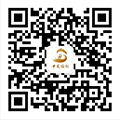For many natives and tourists, the authentic essence of Beijing is found in hutongs, the traditional courtyard housing which once formed the centre of the capital.
Unlike the elite culture served by the Forbidden City and the Summer Palace, the Hutongs echo the life of grassroots Beijingers and highlight the dramatic changes the rest of the city has undergone.
There are more than 7,000 well-ordered hutongs in Beijing either East-West or North-South, just like the general contour of the city. However, it's never easy to explore these narrow alleyways unless you have an innate sense of directions.
Getting on a rickshaw will make your trip much easier as the drivers are the eyes and noses of the city and know where to take you on the adventure.


Here are some recommended popular Hutongs:
Alleyways and courtyard homes have been the signature features of Beijing's urban landscape since the Ming Dynasty. Among them, Nanluoguxiang, namely South Gong and Drum Lane, is one of the old hutongs in Beijing, renowned for its long history, Hutong culture, speciality stores, and distinctive foods. It is 768 metres long and 8 metres wide. Its north end joins Gulou Dong Dajie, and the south end is connected to Di'anmen Dong Dajie. There are eight parallel hutongs on each side of the old alley. These sixteen and the main lane were put on the first list of 25 historic and culturally protected areas in November 1990, by the local Municipal Government.
Cycle along Nanluoguxiang to East Gulou Street, turn left and you'll soon reach the Drum & Bell Tower, an ancient construction lying on the north-south axis of Beijing city. Lying right next to the Tower is the famous "Yao Restaurant," which hosted the former vice president of the United States Joe Biden in 2011.
Driving a round-way of the Drum & Bell Tower, you will then arrive at Yandaixiejie. It's a short street that offers a fun range of shops, cafes and fast food vendors.
Xijiaomin Alley
Xijiaominxiang is a 1,080-metre-long hutong built during the Ming Dynasty. It became prominent when several domestic and overseas banks opened their bureaus here, making the area an early financial district in Beijing.
Ride southward, you will arrive at Qianmen, the guard of the southern entry to the inner city, also where Dashilanr Commercial Street is located. The 276-metre-long street has been renovated to a commercial area with gift shops and vendors. Why not pick up some souvenirs while you're there?
Lingjiang Hutong
Let's start to explore some hutongs in the west of Beijing city, Lingjing Hutong Railway Station (Line 4), where the ancient grey bricks city walls are lined alongside the street. You'll find Lingjing Hutong, Boxue Hutong, Xihongmen Hutong and Liwangfu in the range.
Attention:
The hutong rickshaw market is controlled and operated by hutong travel agencies so the fare is fairly transparent. But still, be careful when you book. Avoid using independent rickshaw drivers and avoid directly negotiating prices with them.
Beijing Attractions:
Recommended Beijing Tours




































